10 Benefits Of Star Fruit, Nutrition, Recipes, & Side Effects
Packed with vitamins B and C, and fiber, this fruit aids metabolism, detoxifies the body, and more.
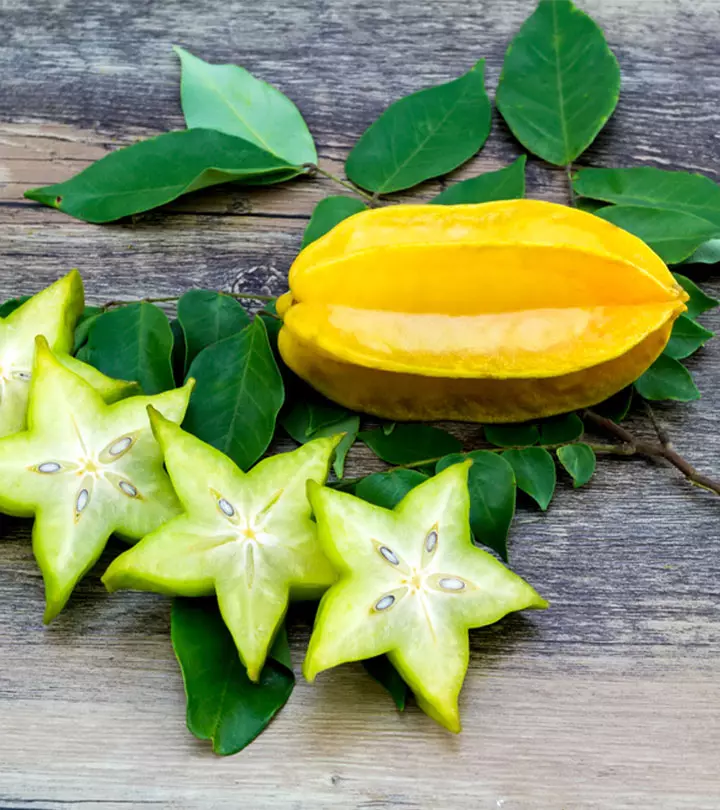
Image: Shutterstock
Although seemingly unusual, there are many health benefits of star fruit that can improve your overall well-being. A native to the tropical countries of South-East Asia, the star fruit often gets side-tracked because of its appearance. What it lacks in appearance, it compensates it with a whole host of benefits. Keep scrolling to understand the medical and health benefits the exotic yet humble-looking star fruit possesses.
 Know Your Ingredient: Star Fruit
Know Your Ingredient: Star FruitWhat Is It?
A star-shaped tropical sweet and sour fruit that is yellow and green in color.
What Are Its Benefits?
It detoxifies the body, promotes sleep, and helps improve digestion, heart, and respiratory health.
Who Can Consume It?
All except people with diabetes or kidney-related issues.
How Often?
People can consume around 31-75 mg a day.
Caution
Consumption of an unripe star fruit can cause vomiting and stomach discomfort.
In This Article
What Is A Star Fruit?
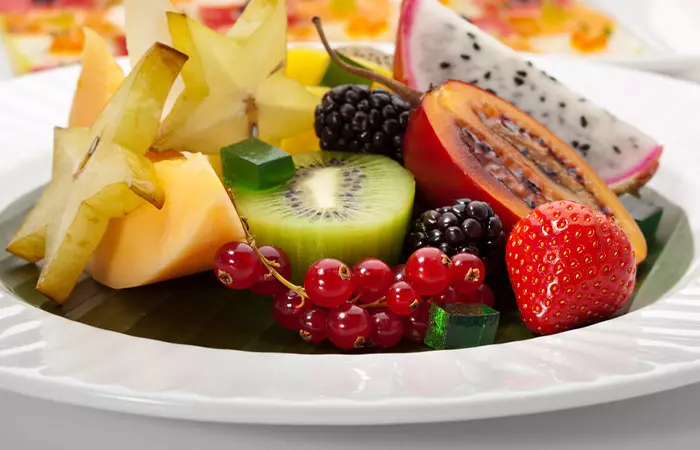
Star fruit, which also goes by the name of carambola, is generally grown in regions with tropical climatic conditions. You can find this fruit grown in abundant quantities in countries, such as India, Malaysia, and the Philippines. Originally, this fruit is native to Malaysia and belongs to the Oxalidaceae family. When this fruit is cut horizontally, the shape resembles that of a star and hence the name “star” fruit (1).
Now that you know what a star fruit is, let’s understand its taste and flavor profile.
When the star fruit is unripe, it has a dark green color. As it ripens, the green color begins to fade away and it starts turning yellow, which means it’s ready for consumption. The star fruit is generally fleshy, with a bit of a crunchy texture and a sweet and tangy taste.
Kristine Kopechanski, a blogger, tried the star fruit for the first time and found its taste indistinguishable. She states in one of her blog posts, “Even after tasting many pieces, I could not figure out what the taste was (i)!” Kristine further mentions that she did not like it at first and adds, “I found it strange and I was pretty disappointed; but after eating a few more pieces, I found myself starting to like the strange taste, most likely because it was like nothing I had tasted before.”
So how to eat star fruit? If you are someone that loves sour and tangy flavors, you can eat the star fruit when it’s raw. If you do not like to eat fruits and you prefer them in juice form, you can make a refreshing glass of star fruit juice. For the health-conscious people who enjoy making a variety of salads, try adding this fruit to your salad for a fun experience (2). Scroll down to know more about the carambola benefits.
 Fun Fact
Fun FactKey Takeaways
- Also known as carambola, star fruit is commonly grown in places that have tropical climatic conditions.
- Star fruit is a rich source of vitamins B and C.
- Star fruit’s high levels of antioxidants help prevent inflammation.
10 Amazing Health Benefits Of Star Fruit
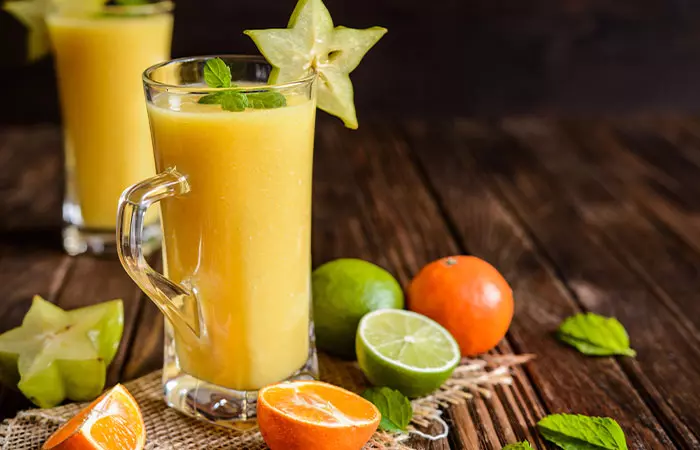
Apart from being an exotic and tasty fruit, the star fruit has numerous health benefits as it is rich in vitamin C. It is also known to be a good source of fiber, has astringent properties, is rich in antioxidants, and is hypoglycemic (3). It is also used in traditional ayurvedic medicine for its ability to aid digestion and cooling properties (4).
 Fun Fact
Fun FactHere Are The Top 10 Health Benefits Of Star Fruit
1. Rich Source Of Vitamins B And C
Star fruits are a rich source of vitamins B and C and gallic acid. These vitamins and minerals are essential for maintaining and improving your immune system. They also help in improving the health of your hair and protect your skin from UV damage (5).
2. Good Source Of Fiber
Soluble fiber which is essential for the smooth functioning of your digestive system is found in the star fruit. In addition to soluble fiber, the star fruit also contains insoluble dietary fiber that prevents the absorption of LDL Cholesterol in the intestinal lining, thereby reducing the risk of heart issues and obesity (6).
3. Low In Calories And Sugar
Star fruit is ideal for those who like to have a low calorie and low carb-based diet as it contains very low sugar levels and can be consumed by people with diabetes or on a weight loss regimen.
A medium star fruit that may weigh around 100 grams will contain a little over 6 grams of carbohydrates and 3 grams of sugar. (7)
4. Prevents Inflammation
The high levels of antioxidants present in star fruit give it anti-inflammatory properties that help alleviate the symptoms of inflammatory skin disorders such as psoriasis and dermatitis (8).
5. Helps In Improving Digestion And Metabolism

The presence of riboflavin and folic acid helps in regulating your metabolism (6). Star fruit is rich in dietary fiber, which aids in bulk formation and smooth bowel movement. It also has gut-friendly and anti-inflammatory properties and cleanses toxins and bacteria from the gut, helps in better nutrient absorption, and improves digestive health.
6. Detoxifies Your Body
Star fruits have diuretic properties that help in expelling excess amounts of water and toxins from your body. This fruit helps in cleansing your liver and kidneys. However, studies have shown that people with pre-existing kidney conditions should avoid consuming star fruit as it causes renal issues (9). An experiment conducted to observe the anti-cancer properties of star fruit extract showed that it protects liver cells in rats against liver cancer (10).
7. Anti-ulcer Properties
In traditional medicine such as Ayurveda, the extracts of the star fruit have been used in the treatment of stomach ulcers. Its extracts contain terpenoidsi A class of organic chemicals in plants that have wound-healing and anti-inflammatory properties. , flavonoids, and mucilagei A thick edible substance found in plants that contain various potent compounds and are often used in medicines. that help in treating ulcers (4). The cooling and anti-inflammatory properties of the star fruit are helpful in alleviating eyesores. Making a salve of the fruit and applying it to your eyes will do the trick (5). The presence of vitamin C, gallic acid, and epicatechini A type of flavonoid that acts as an antioxidant and cleanses inflammation-causing toxins from the body. help in the treatment of mouth ulcers (11).
8. Improves Respiratory Health
A prototypical study was conducted to ascertain the effectiveness of combining star fruit juice with honey on participants who had Chronic Pulmonary Disease (COPD). The study concluded this combination along with anti-inflammatory and antioxidant agents can alleviate COPD and help improve respiratory issues (12).
9. Improves Heart Health
The star fruit has a whole host of nutrients that are beneficial for our health, especially potassium and sodium that are essential electrolytes that help in regulating blood pressure and cardiovascular health (13).
10. Improves Sleep
If you are having trouble getting a good night’s sleep, look no further than the star fruit as it contains magnesium, a mineral known to promote sleep. The magnesium present in the star fruit helps in activating the chemical Gamma-aminobutyric acid (GABA) that helps induce sleep (14).
11. May Improve Hair Health
Star fruit possesses antioxidant and anti-inflammatory properties that may promote hair health. Antioxidants like vitamin C and beta carotene found in star fruit help with iron absorption (15). This may potentially reduce hair loss. In addition, this fruit is also a good source of zinc (15). Some research suggests that zinc may help treat alopecia areata and promote recovery of the hair follicles (16). Deficiency of micronutrients like iron, vitamin C, and zinc was also found to increase the risk of hair loss and alopecia (17). However, more direct scientific research linking star fruit to hair health is warranted.
Star fruit also contains 91% water, which makes it a good and healthy option during hot and humid summers. Let us now find out what other important elements it contains in the next section.
Nutritional Facts of Star Fruit
The simple yet amazing star fruit often gets side-stepped due to its appearance. However, you do not judge a book by its cover, exterior of the fruit in this case. The humble-looking star fruit is loaded with vitamins and macronutrients. The table below provides the nutritional value of star fruit.
Minerals Found In Star Fruit.
| Mineral | Amount (mg/100g of fruit*) | |
|---|---|---|
| Sodium | 3.8 – 3.85 | |
| Potassium | 167.13 – 6.40 | |
| Calcium | 6.37 – 6.40 | |
| Potassium | 167.13 – 6.40 | |
| Phosphorous | 17.87 – 17.88 | |
| Magnesium | 11.85 – 12.05 | |
| Iron | 0.34 – 0.45 | |
| Copper | 0.19 – 0.45 | |
| Zinc | 0.29 – 0.51 | |
| Manganese | 0.04 – 0.52 | |
| *On a dry weight basis (3). | ||
Vitamins Found In Star Fruit
| Name | Amount (mg/100g star fruit)* | |
|---|---|---|
| Carotene | 0.003 – 0.55 | |
| Tartaric acid | 4.37 | |
| Oxalic acid | 9.6 | |
| Ketoglutaric acid | 2.2 | |
| Citric acid | 1.32 | |
| Vitamin B1 & B2 | 0.12 | |
| Vitamin C | 25.8 | |
| *On a dry weight basis (3). | ||
Exploring the varieties of star fruits reveals how their unique characteristics can influence their health benefits. Scroll down to know more.
Varieties Of Star Fruits
There are two main varieties of star fruits, the smaller-sized fruits are tart in taste and the bigger and longer counterparts are sweet. Both of these fruits when unripe are dark green in color and during the ripening process their colors may vary from a bright yellow to golden or orange. The star fruit tastes best when it is allowed to ripen on the tree. The ripening will take 60-75 days based on the climatic conditions, irrigation practices, and the variety of the fruit.
Understanding the different types of star fruit will further help you choose when to eat them for their best taste. Scroll down to know more.
When Is The Best Time To Eat Star Fruit?
Fruits when consumed during their season taste the best, this is applicable to the star fruit as well. Although star fruits are available all year round, their harvest season is from June to February. Production peaks from September to December.
Once you have determined the best time to eat star fruit for maximum flavor and freshness, it is important to know how to eat this unique fruit. Move on to the next section for some tips on enjoying this fruit at its best.
How To Eat A Star Fruit?
To begin with, start by choosing a ripe star fruit. You can tell the difference between a ripe and unripe star fruit based on its color. Ripe ones are yellow in color and unripe ones are green, the flesh should ideally be firm to touch. If you’ve picked up an unripe fruit from the store, leave it on the counter for 2-3 days to ripen. Make sure you wash the fruit thoroughly before cutting it
Now that you know how to eat star fruit, you can explore its culinary uses to enhance your dishes with its vibrant flavor in the next section.
Culinary Uses Of Star Fruit
Star fruit can be used in a variety of culinary preparations because of its unique appearance and tangy flavor. It is usually eaten raw, either as a cool snack or sliced into salads. It is a wonderful addition to fruit salads, salsas, and smoothies due to its crisp texture and sweet-tart flavor. Star fruit can also be juiced and added to cocktails as a garnish or used in tropical drinks. When cooked, it adds a vibrant taste to chutneys, jams, and sweets. Its unique star-shaped form also adds visual appeal as a garnish for savory and sweet foods. Also, you can include star fruit in your diet in other ways such as:
- Add star fruit to yogurt or porridge for a natural crunch and sweetness.
- Dehydrate or air fry star fruit slices to create chewy, tart snack chips.
- Mix star fruit into cakes or tarts to add flair to tropical sweets.
- Lightly sauté or stir-fry the star fruit with fish or veggies.
- Add star fruit to salsas to give them a distinctive flavor by mixing it with lime, tomatoes, and onions.
- Grill or roast star fruit with honey to enhance its natural caramelized sweetness.
To enjoy the diverse culinary uses of star fruit, it is important to know how to cut it properly, ensuring you get the best flavor. Scroll down to learn more about it.
How To Cut A Star Fruit?
- Place the washed ripe fruit on your cutting board horizontally such that the ridges are facing up towards your fingers.
- Cut the stem end of the fruit using a sharp knife.
- Holding the fruit vertically on the cutting board make shallow cuts along each of the five ridges of the fruit.
- Place the fruit horizontally on the cutting board and now slice it. The thickness of the slices is subject to your personal preference.
- Remove the seeds and enjoy your star fruit.
If you do not want to go through the hassle of cutting the star fruit, you can also choose to eat it whole.
It is important to know how to store star fruits properly to preserve their freshness and flavor after learning how to chop them. Learn how to store it effectively in the following section.
How To Store Your Star Fruit?
You can store your ripe star fruit at room temperature on your kitchen counter, fruit basket, or refrigerator for approximately a week. Under-ripe star fruit can be kept on the kitchen counter, fruit basket, or refrigerator for approximately four weeks. If your star fruit is overripe, it will turn to mush within a week, eat it before it becomes mushy.
Understanding the proper way to store your star fruit will help you maintain its quality and enjoy trying out all the numerous ways to prepare and consume it. Now that you know all about cutting and storing star fruit, you might enjoy the recipes shared in the following section.
Ways To Eat Star Fruit
Eating a star fruit is fairly simple; wash, cut, and eat. However, if the MasterChef within you decides to whip up a culinary treat, here are a few ways in which you can eat the star fruit.
Adding It To Your Salad
Give your regular salad a nice twist by adding chopped-up star fruit. It will uplift the flavors and texture of your salad and leave you with a wonderful experience. This amazing fruit can be added to vegetarian, vegan, and chicken salads.

Make A Fruit Punch
A star fruit punch is a refreshing drink on a hot summer afternoon. Here is a simple recipe that you can follow to make your own star fruit punch.
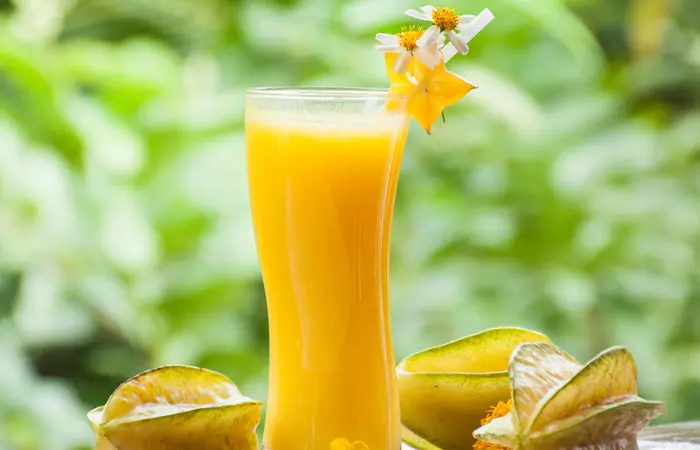
Ingredients Required.
- 4 star fruits chopped into small pieces
- ½ cup of pineapple juice
- 3 tablespoons ginger syrup
- 1 tablespoon of lemon juice (1 medium-sized lemon can be used for juice)
- 2 cups of crushed ice (you can use ice cubes if you do not have crushed ice)
- ½ cup of lemon-flavored soda
- 2-3 slices of star fruit for garnish (optional)
- 2 glasses to serve
Preparation
- In a blender add the pineapple juice and star fruit pieces and blend till it’s a smooth paste.
- Using a sieve, pour this mixture into 2 glasses.
- The residual solids can be discarded.
- To the sieved mixture add the ginger syrup and lemon juice and stir well and refrigerate for 45-60 minutes.
- Fill each of the 2 glasses with 1 cup of crushed ice and pour in the mixture.
- Add ¼ cup of lemon soda, garnish with star fruit slices and enjoy!
While the star fruit is a great fruit, it does have some side effects that you need to be aware of. Read through to find out.
Side Effects Of Eating Star Fruit
The star fruit undoubtedly is a tasty and delicious exotic fruit with a whole host of health benefits. However, there is a flip side to it as well. Studies have shown that people with pre-existing kidney or renal diseases should avoid eating star fruit as it causes nephrotoxicity due to the high oxalate content that is present in it. People on prescription medication should also avoid eating star fruit or should consult their doctor before consuming it (18).
If you have a diabetic condition, consuming star fruits in large quantities over a prolonged period may lead to renal complications. A study that analyzed two diabetic patients who developed severe renal failure after consuming star fruit juice as a remedy stated that this was the first-ever case of star fruit-induced nephrotoxicity. Given the limited sample size, the study concluded by stating that understanding the complete medical history, consumption habits and any other remedial medication being used by the patients prior to developing renal failure is imperative (9).
Infographic: Nutrition And Benefits Of Star Fruit
Star fruit, also known as carambola, is known for its sweet and tangy flavor. It is loaded with many beneficial nutrients. When consumed as a part of your regular diet, star fruit offers an array of health benefits.
Learn about the key nutrients in star fruit and the major benefits it offers from the following infographic. Check it out! Illustration: StyleCraze Design Team
Star fruit is a tropical Asian fruit popular for its unique appearance. This nutritionally rich crunchy fruit is packed with essential nutrients, vitamins, and minerals. Star fruit benefits range from promoting digestive health to reducing inflammation in the body. In addition, it may help boost immunity, heart, and respiratory health. You can reap the benefits of star fruit by adding it to your salads and juices or eating it raw. Star fruit has health-promoting properties but can also be harmful in excess. So, limit your consumption and reap the benefits of this delicious Asian fruit (19).
Frequently Asked Questions
Is star fruit a superfood?
Star fruit is considered to be a superfood due to its rich nutrient profile and wide range of health benefits. It is low in calories and high in fiber and vitamins, most notably, vitamin C.
Is star fruit good for pregnancy?
Yes, starfruit is great for pregnant women as it may help boost immunity as well as relieve constipation, a common issue in pregnancy. However, consume starfruit in moderation if you are pregnant to avoid the risk of any adverse effects.
Is star fruit good for kidney stones?
No. Star fruit is high in oxalic acid, which is positively associated with the formation of kidney stones. In fact, individuals with kidney issues should avoid consuming star fruit as it may further damage the organs and induce nephrotoxicity.
Illustration: Benefits Of Star Fruit Nutrition Recipes & Side Effects
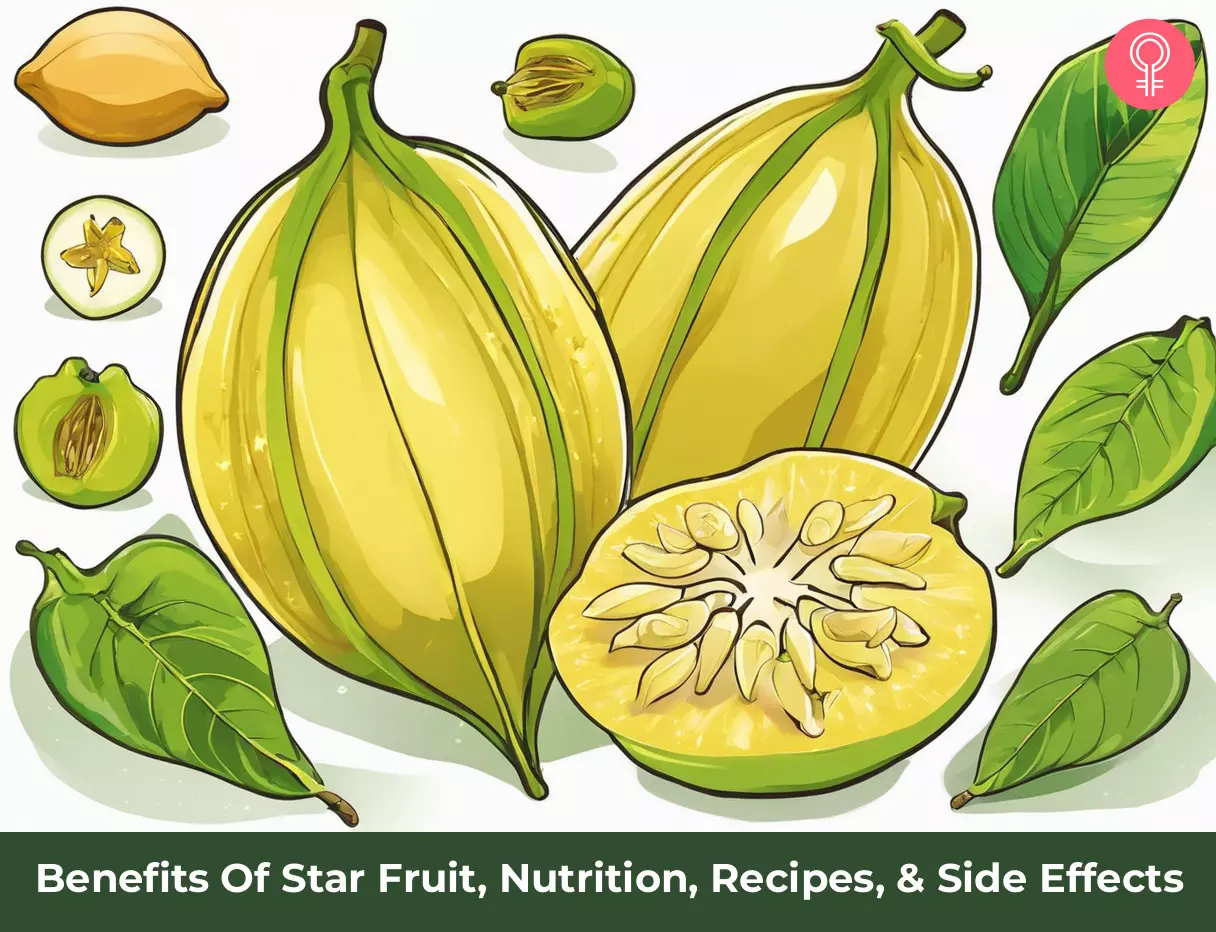
Image: Stable Diffusion/StyleCraze Design Team
Learn everything about the starfruit from this YouTuber who grows this fruit tree on her property. Watch this video to get an insight into the flavor and other characteristics of starfruit along with some enjoyable recipes!
Personal Experience: Source
StyleCraze's articles are interwoven with authentic personal narratives that provide depth and resonance to our content. Below are the sources of the personal accounts referenced in this article.
i. Star fruithttps://kkopecha.wordpress.com/2011/10/29/star-fruit/
References
Articles on StyleCraze are backed by verified information from peer-reviewed and academic research papers, reputed organizations, research institutions, and medical associations to ensure accuracy and relevance. Read our editorial policy to learn more.
- Averrhoa Carambola: An Updated Review
https://www.researchgate.net/publication/289630352_Averrhoa_carambola_An_updated_review - Starfruit: A fruit for healthy life
https://www.phytojournal.com/archives/2016.v5.i3.868/starfruit-a-fruit-for-healthy-life - Nutritional And Medicinal Properties of Star Fruit (Averrhoa Carambola): A Review
https://www.ncbi.nlm.nih.gov/labs/pmc/articles/PMC5357571/ - Nutritional and medicinal properties of Star fruit (Averrhoa carambola): A review
https://pubmed.ncbi.nlm.nih.gov/33747490/ - The Roles of Vitamin C in Skin Health
https://www.ncbi.nlm.nih.gov/pmc/articles/PMC5579659/ - Impact Of Micronized Starfruit (Averrhoa Carambola L.) Fiber Concentrate On Lipid Metabolism In Mice.
https://pubmed.ncbi.nlm.nih.gov/24846002/ - Nutritional Values of Star Fruit (Raw)
https://fdc.nal.usda.gov/fdc-app.html#/food-details/171715/nutrients - Analysis of the Potential Topical Anti-Inflammatory Activity of Averrhoa carambola L. in Mice
https://www.ncbi.nlm.nih.gov/labs/pmc/articles/PMC3137785/ - Star Fruit Toxicity: A Cause of Both Acute Kidney Injury and Chronic Kidney Disease: A Report of Two Cases.
https://www.ncbi.nlm.nih.gov/labs/pmc/articles/PMC4683968/ - Prophylactic Role of Averrhoa carambola (Star Fruit) Extract against Chemically Induced Hepatocellular Carcinoma in Swiss Albino Mice
https://www.ncbi.nlm.nih.gov/pmc/articles/PMC3950398/ - A Preliminary Study on The Effects of Star Fruit Consumption on Antioxidant And Lipid Status In Elderly Thai Individuals
https://www.ncbi.nlm.nih.gov/labs/pmc/articles/PMC5012612/ - Prototype “Star Fruit-Honey Product and Effectiveness on Antioxidants” Inflammation and Walking Distance in Participants with Stable Chronic Obstructive Pulmonary Disease (COPD)
https://www.phcogj.com/article/1228 - Effects of Sodium and Potassium
https://www.cdc.gov/salt/sodium-potassium-health/index.html - GABA Mechanisms And Sleep
https://pubmed.ncbi.nlm.nih.gov/11983310/ - Nutritional and medicinal properties of Star fruit (Averrhoa carambola): A review
https://www.ncbi.nlm.nih.gov/pmc/articles/PMC7958541/ - The Therapeutic Effect and the Changed Serum Zinc Level after Zinc Supplementation in Alopecia Areata Patients Who Had a Low Serum Zinc Level
https://www.ncbi.nlm.nih.gov/pmc/articles/PMC2861201/ - The Role of Vitamins and Minerals in Hair Loss: A Review
https://www.ncbi.nlm.nih.gov/pmc/articles/PMC6380979/ - “Star Fruit: Health Benefits” “Safety” Side Effects and Drug interactions.
https://www.researchgate.net/publication/333384849_Star_Fruit_Health_Benefits_Safety_Side_Effects_and_Drug_interactions - Status Epilepticus Induced By Star Fruit Intoxication In Patients With Chronic Renal Disease. https://www.sciencedirect.com/science/article/pii/S1059131105001470
Read full bio of Silky Mahajan
Read full bio of Varsha Patnaik
Read full bio of Ravi Teja Tadimalla
Read full bio of Payal Karnik






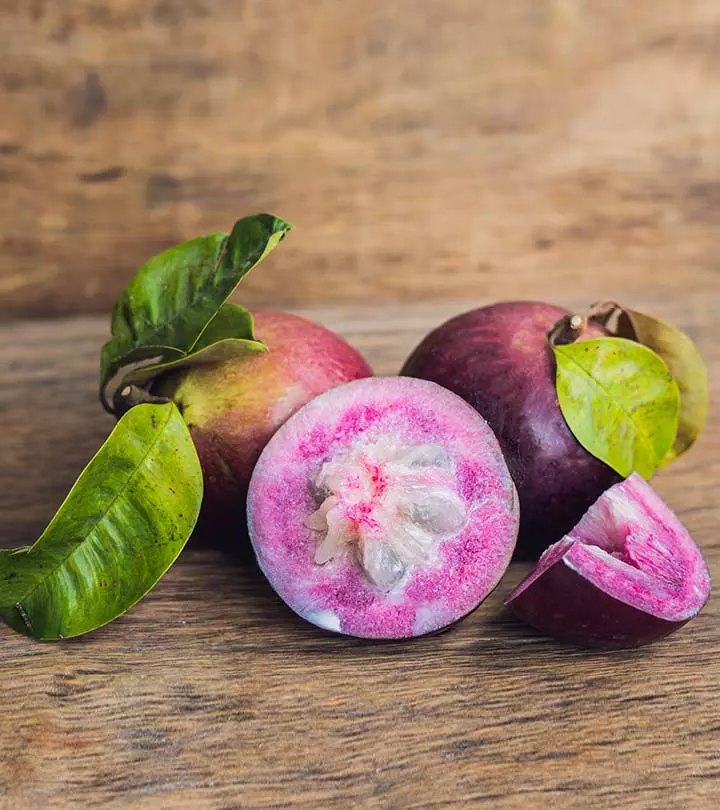

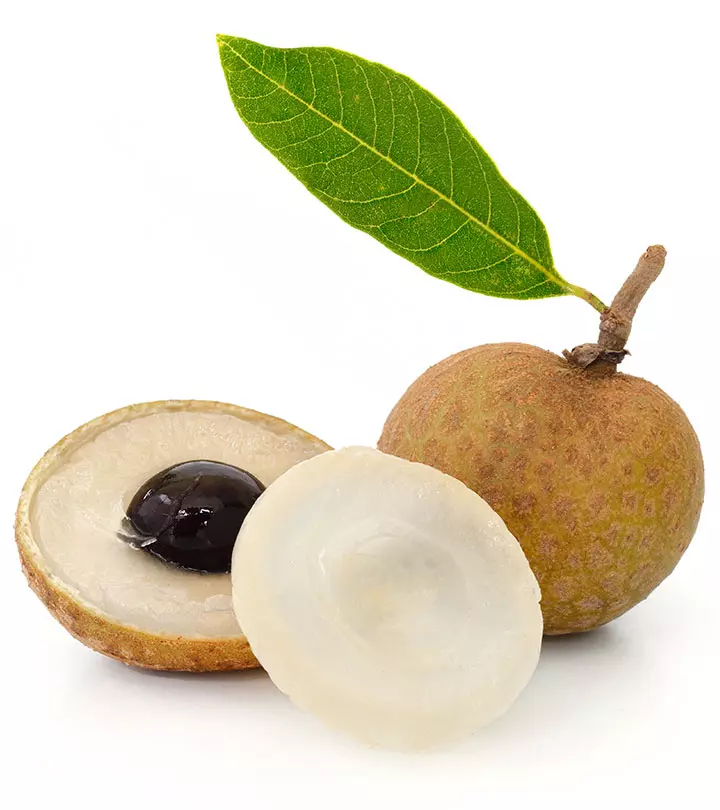
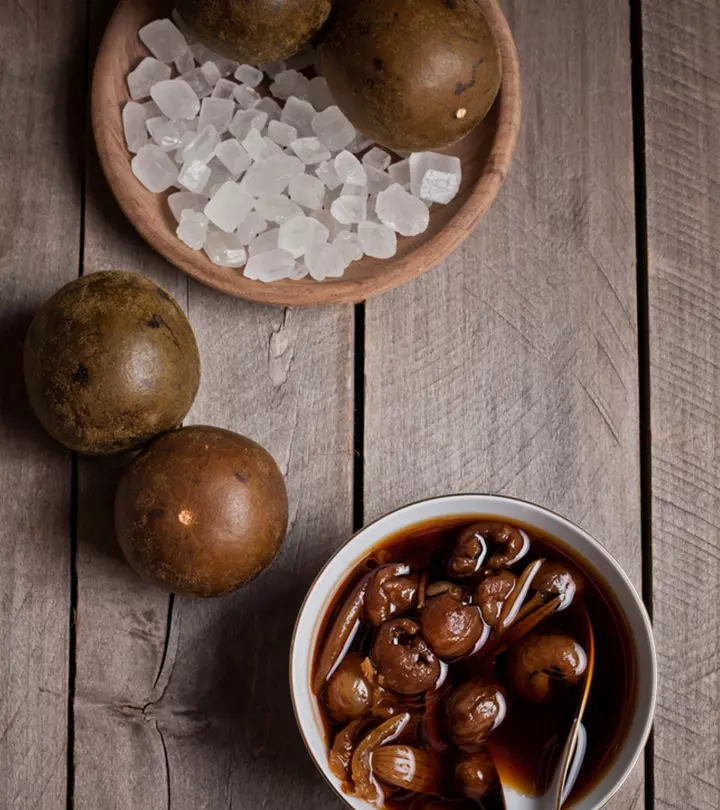
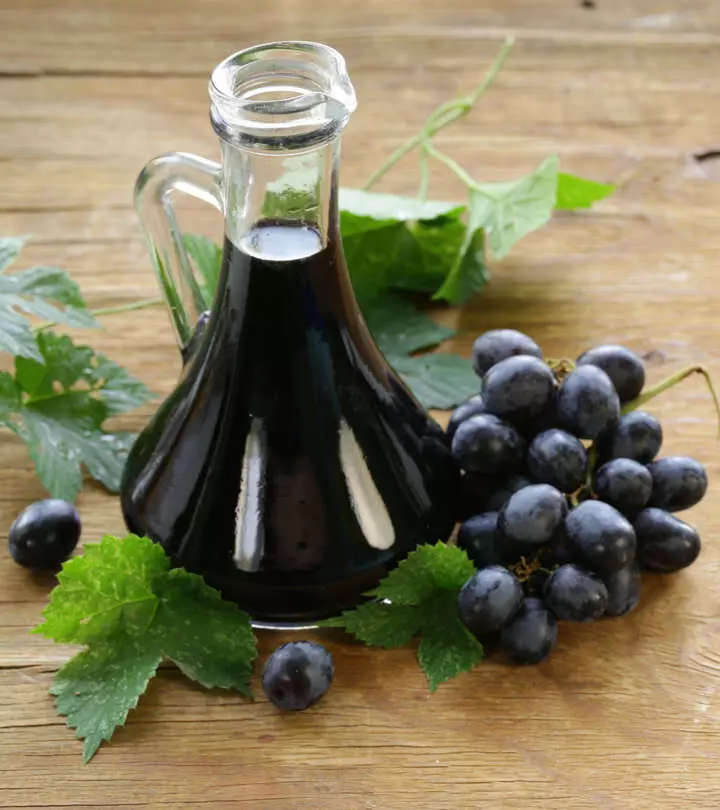
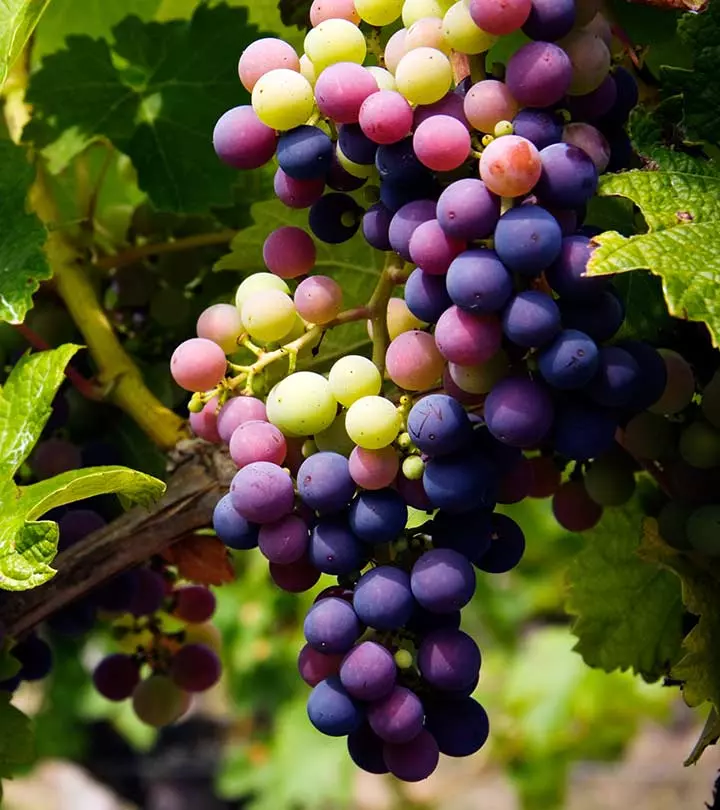
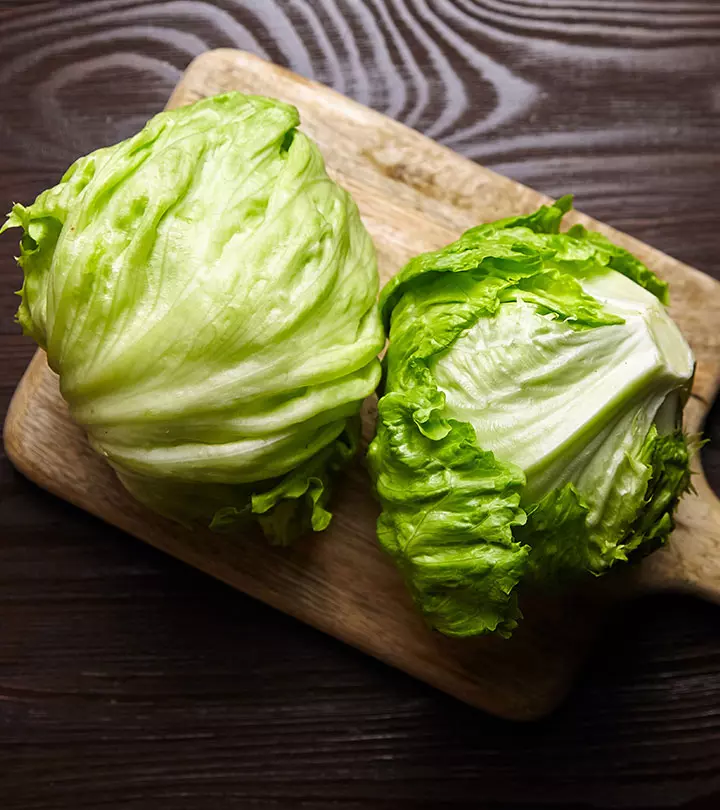
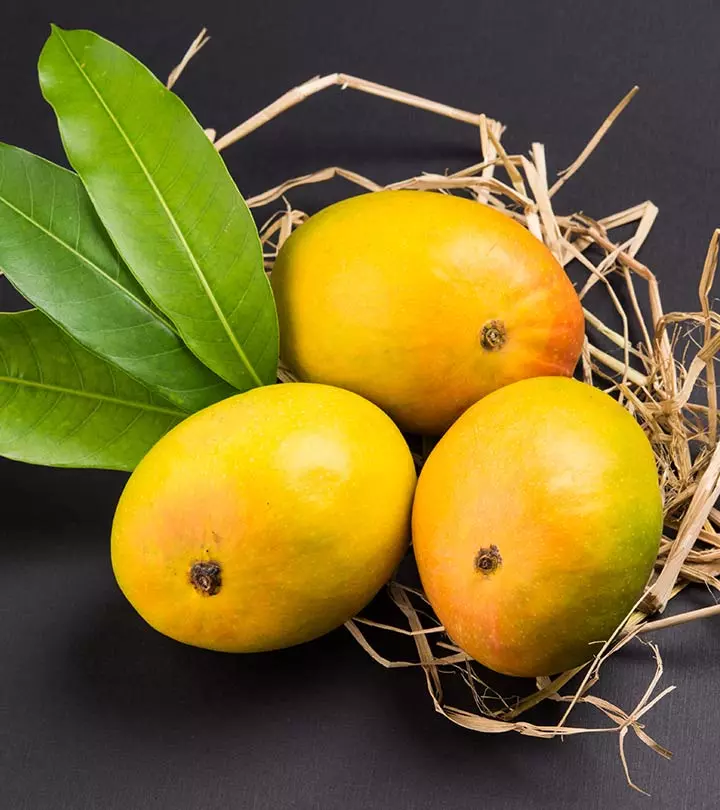
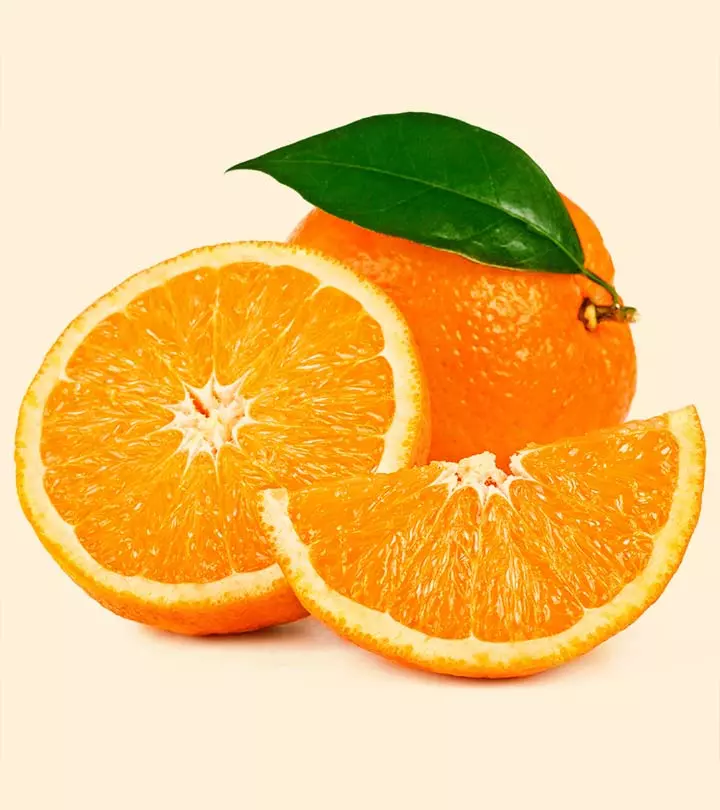
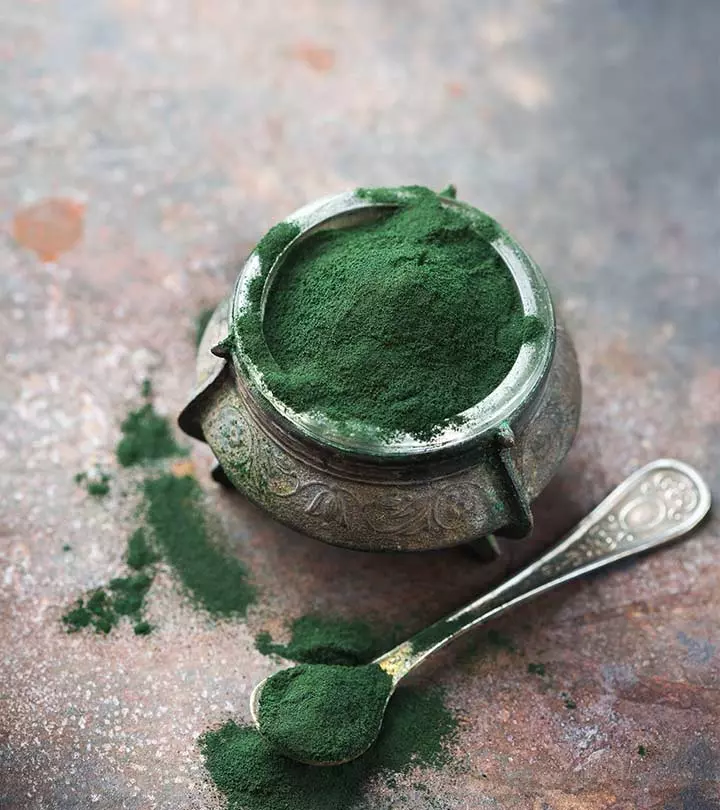

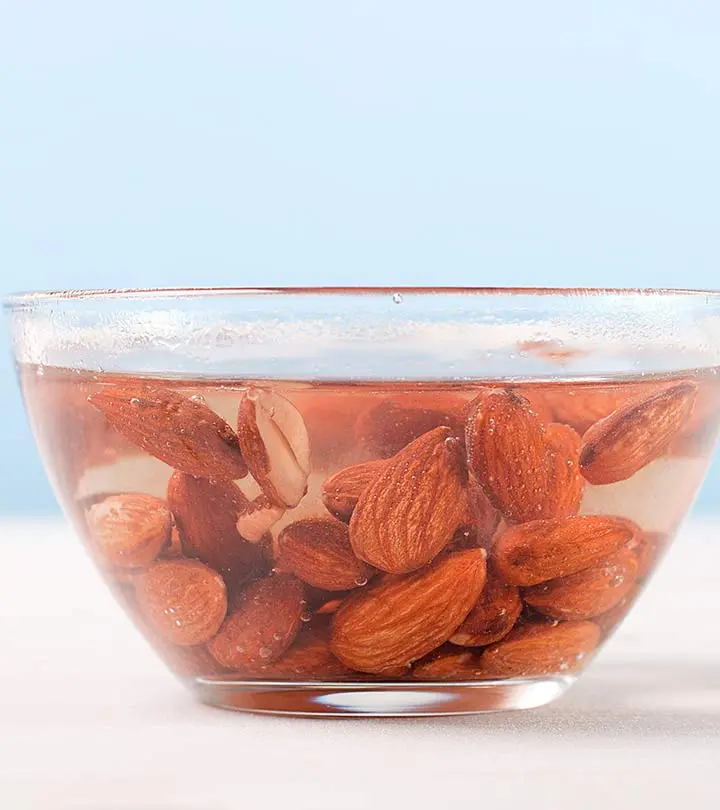
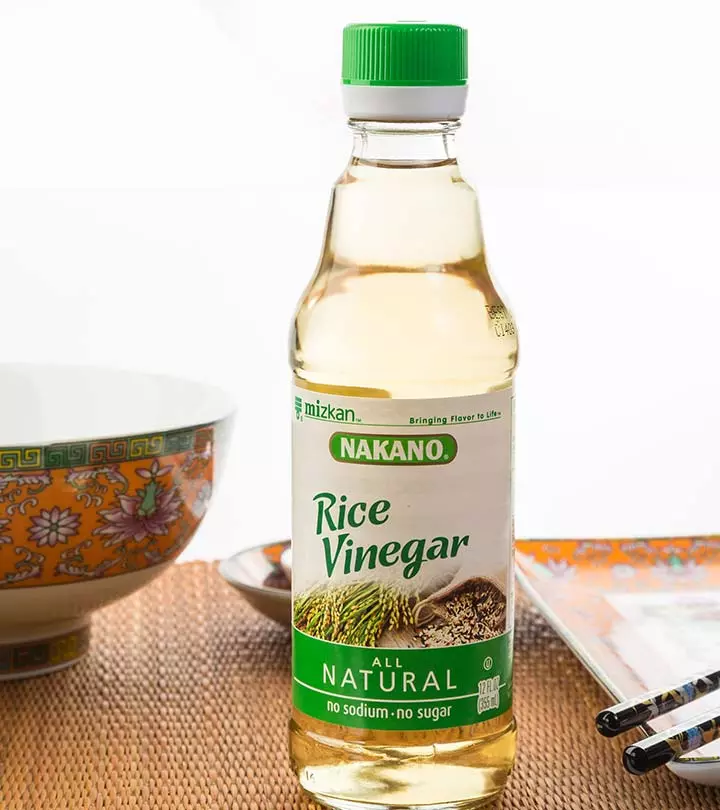


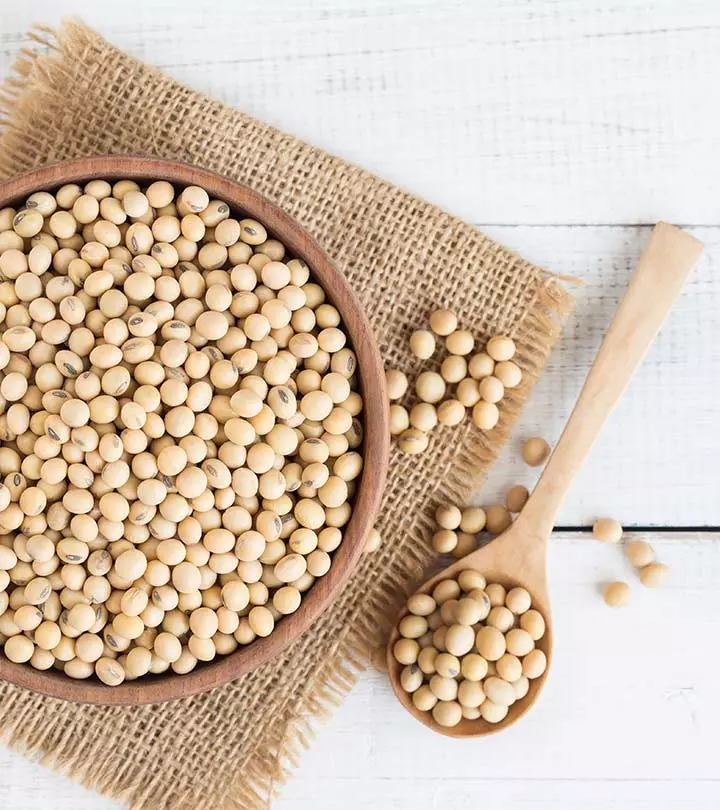

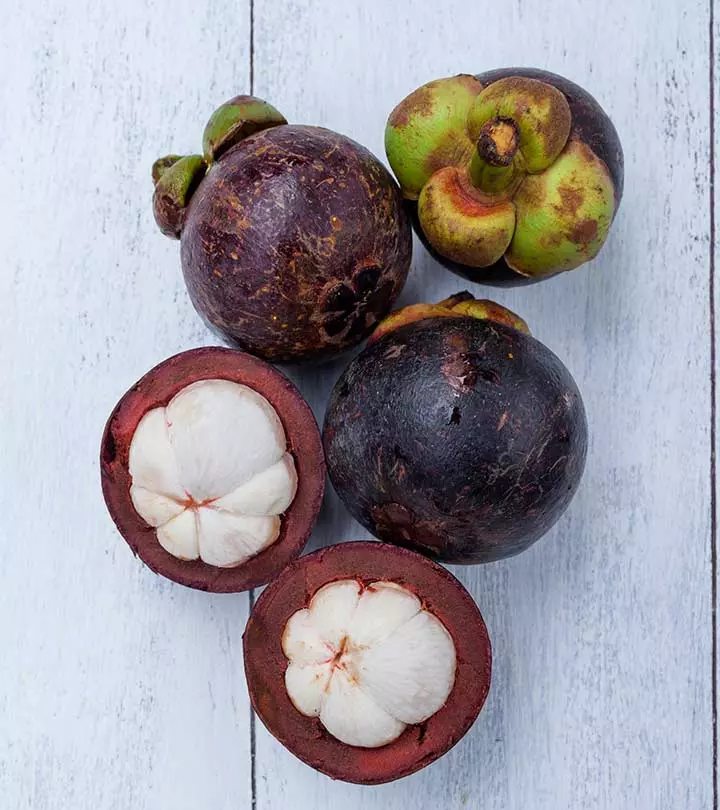



Community Experiences
Join the conversation and become a part of our empowering community! Share your stories, experiences, and insights to connect with other beauty, lifestyle, and health enthusiasts.